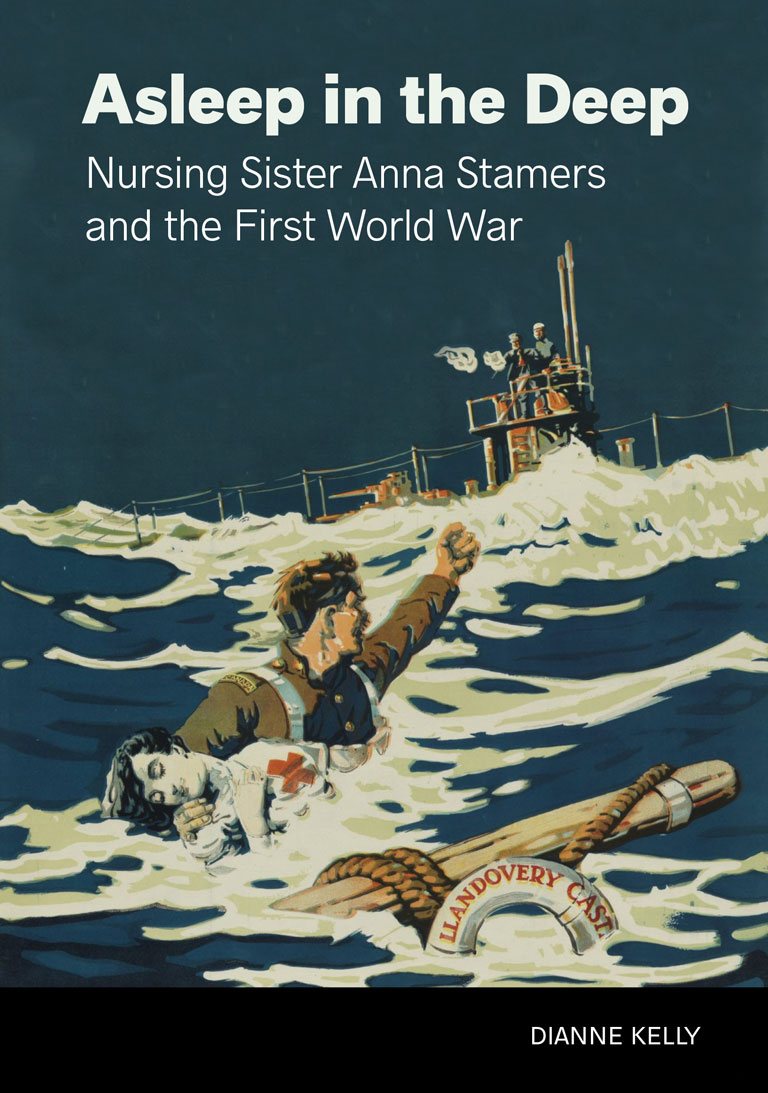Asleep in the Deep

Asleep in the Deep: Nursing Sister Anna Stamers and the First World War
by Dianne Kelly
Goose Lane Editions
222 pages, $19.95
A double review with
A Canadian Nurse in the Great War: The Diaries of Ruth Loggie, 1915–1916
edited by Ross Hebb
Nimbus Publishing
200 pages, $19.95
Of the 2,800 Canadian nurses who served during the First World War, very few kept a record of their wartime experience. Thus, Ruth Loggie’s war diary is a treasure.
At the outset of A Canadian Nurse in the Great War, Loggie’s words reflect the good-humoured attitude of someone embarking on a grand adventure. Upon her arrival in France in the summer of 1915, the wounded were trickling in slowly, and so she had time to go on shopping excursions, to tour the bucolic countryside by bicycle, and even to learn some French. But with fall came a major influx of patients, as the British Battle of Loos was launched in unrelenting rainy weather. “The men are all sick, cold, and miserable…. It’s dressings, dressings from morning to night.”
Conditions worsened as winter set in. The tent hospital and staff lodgings proved woefully inadequate, and Loggie — a sturdy lass, judging by her photo — recorded her own miseries, such as painful eye infections, recurring headaches, measles, and bone-numbing cold: “I have trench feet and suffer agonies of the damned tonight.”
Presumably Anna Stamers had similar experiences, but her words, if recorded anywhere, are lost to history. Unlike Loggie, who lived to be eighty-five, Stamers perished at age thirty along with thirteen other nursing sisters during the U-boat sinking of the hospital ship Llandovery Castle on June 27, 1918. Asleep in the Deep draws on the letters or diaries of other nurses — such as Loggie’s best friend, Clare Gass — to flesh out details of what Stamers’ three years of service might have been like.
The official record notes that Stamers — who, like Loggie, served in field hospitals not far from the front — was sent home to New Brunswick for two months in the summer of 1917 to recover from mental and physical exhaustion. By fall she was back overseas, but in more comfortable circumstances at a well-equipped purpose-built general hospital in England. Her performance appraisals noted that she “did not keep a very tidy ward” but was gentle and kind and “very good” with patients.
Unfortunately, we don’t learn much more about Stamers. While the book’s title suggests otherwise, Asleep in the Deep is actually more of an overview of Canadian wartime nursing history, rather than a biography of one nurse. Still, the two books together provide a good description of the unheralded contributions of Canadian nursing sisters during the Great War.
Themes associated with this article
Advertisement




